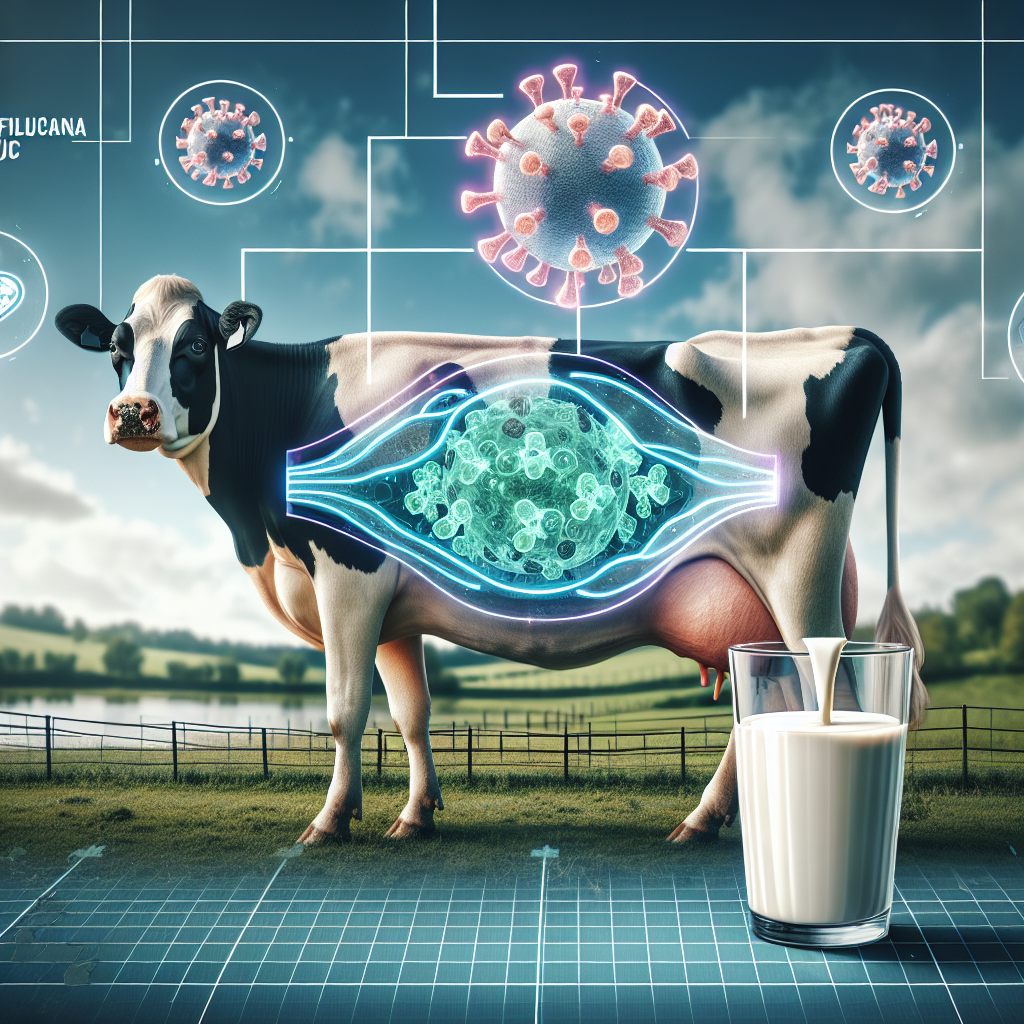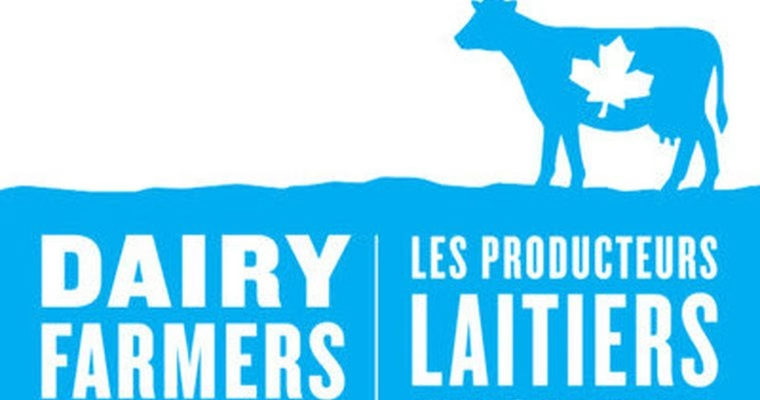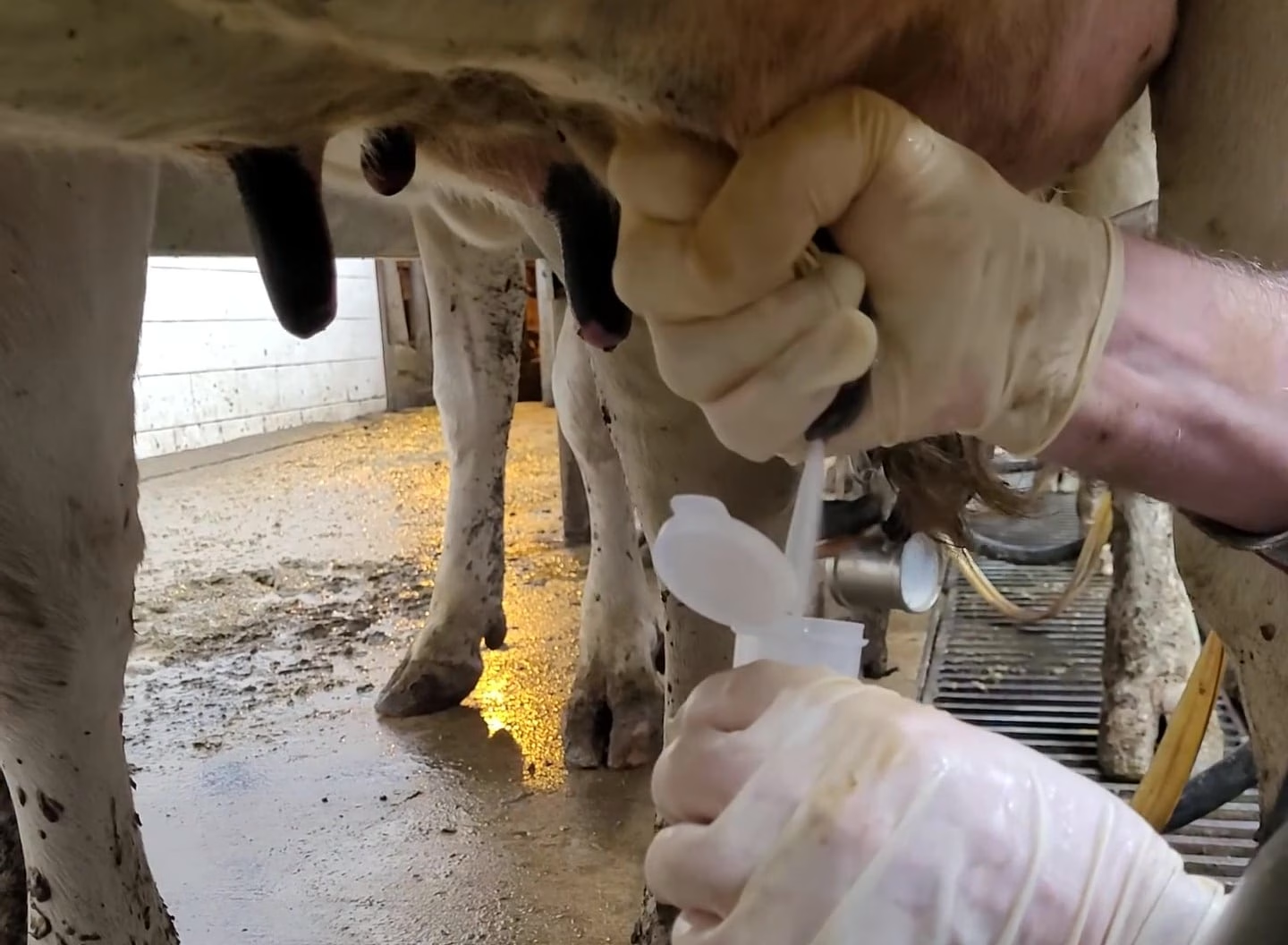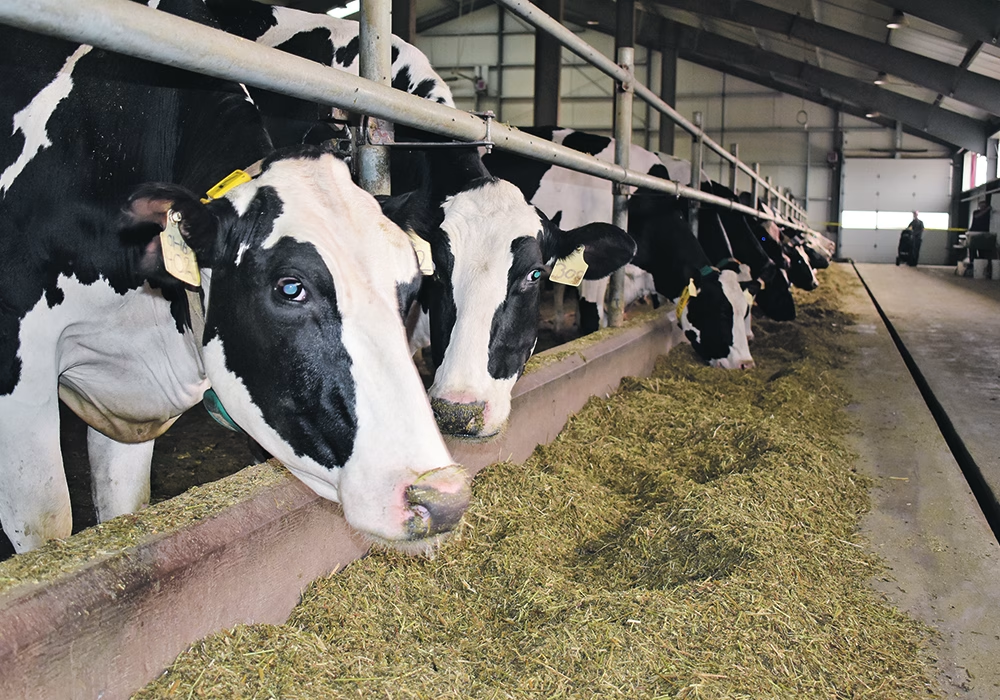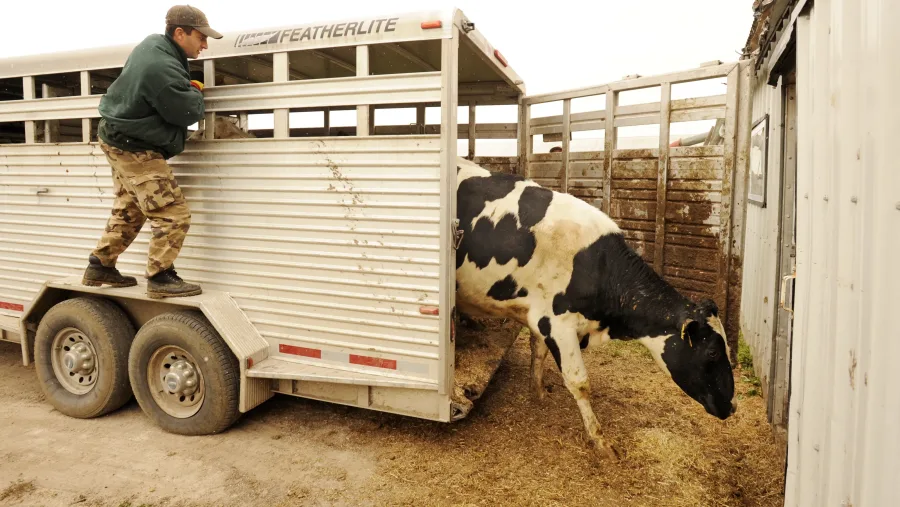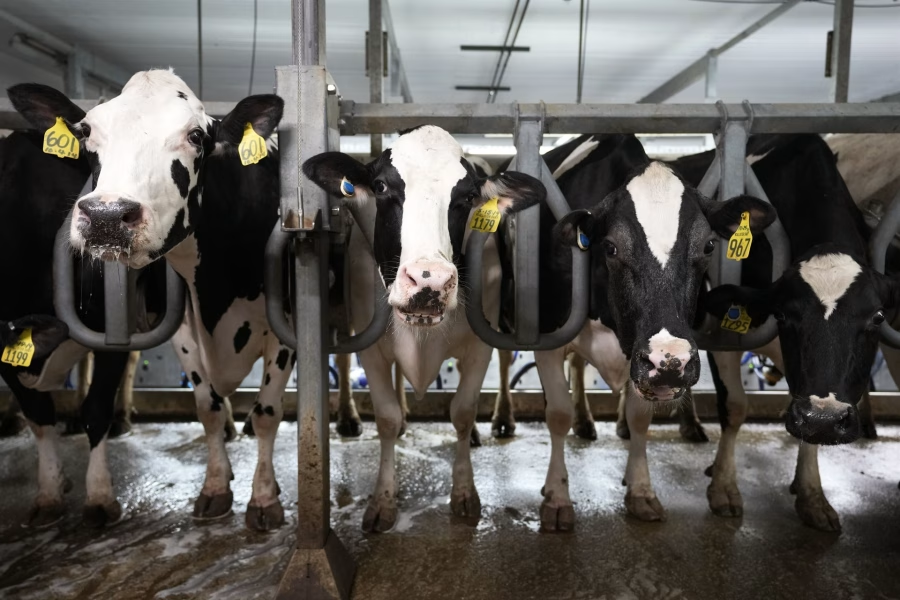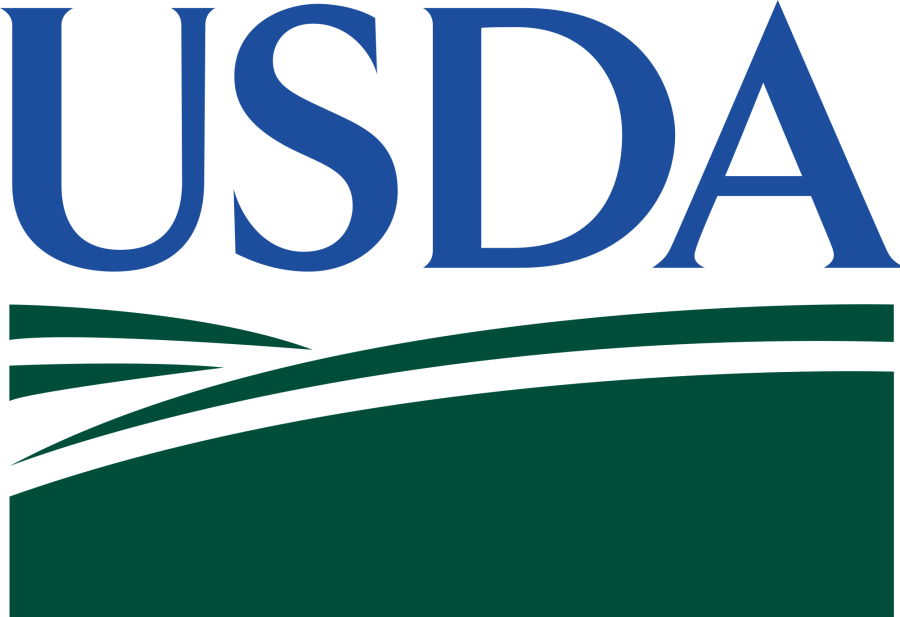Explore Dr. Sheila McGuirk’s remarkable transformation from a farm girl to a pioneering figure in veterinary medicine. Learn how her passion for cows fueled a stellar career in animal health.
Few names command as much respect as Dr. Sheila McGuirk regarding dairy farming. Her career spans four decades, and her effect is significant. She is known as “The Mother Teresa of World Dairy Expo,” and she has influenced the disciplines of big animal internal medicine and food animal production.
Dr. McGuirk’s passion for bovines has made her a beloved figure among dairy producers worldwide. Her career, defined by compassion and ingenuity, exemplifies the mutually beneficial interaction between dairy research and animal husbandry. Her story, from multi-sport college athlete to experienced dairy judge and cancer survivor, as she shared on World Dairy Expo’s podcast – The Dairy Show, is inspirational and informative. Discover how Dr. Sheila McGuirk’s commitment to excellence, including her pioneering work in bovine health and her influence on future veterinarians, affects the dairy industry’s future. Be sure to listen to Dr. Sheila McGuirk’s interview with The Dairy Show
Rooted in Rural Maryland: The Foundation of Dr. Sheila McGuirk’s Journey
Dr. Sheila McGuirk grew up in the rolling hills of Maryland as one of 14 siblings. This vast family, with different personalities and abilities, was brought together by a shared love of country life and dairy farming. Her father’s agricultural endeavor prompted their transfer from Long Island, New York, to Maryland. While he initially contributed economic acumen, his developing interest in dairy farming, especially with registered Jersey cows, made an unforgettable impression on young Sheila.
Her father, initially collaborating with an experienced dairyman, eventually became immersed in the complexities of dairy production. He engaged in the science and skill of producing Jersey cattle, ultimately buying out his partner to gain complete control. The farm successfully bred high-quality dairy animals and processed milk, including the famous seasonal eggnog. This flourishing operation gave Sheila her first hands-on experience with dairy farming.
Sheila’s early responsibilities on the family farm, which included herding cows into the barn and assisting with the milking process, connected her daily life with the rhythms of dairy farming. Her father’s passion and the practical challenges of running a successful dairy farm ignited her profound interest in bovine care. This early immersion provided a solid foundation for her future work, instilling a lifelong passion for dairy cow research and welfare.
Surmounting Barriers: Dr. McGuirk’s Academic Odyssey through Cornell and Beyond
Dr. Sheila McGuirk began her academic career at Cornell University, concentrating in animal science and dairy science, both traditionally male-dominated professions at the time. During her undergraduate years, she participated in various extracurricular activities, including serving on the college’s award-winning dairy judging team and succeeding as a two-sport varsity athlete in basketball and tennis. Despite the demanding nature of her educational and extracurricular responsibilities, McGuirk maintained an exceptional academic record in the face of substantial gender-based difficulties.
After completing her undergraduate degree, McGuirk faced the daunting task of gaining admission to veterinary colleges, which were then scarce and predominantly male-dominated. As a Maryland resident applying to schools like Cornell, which did not admit out-of-state students from her area, she faced additional hurdles. However, her determination to overcome these obstacles was unwavering. She utilized existing contracts for Maryland citizens and eventually secured admission to the University of Georgia’s School of Veterinary Medicine. Her decision to focus on big animal medicine, where female veterinary students were significantly underrepresented, further demonstrated her passion and determination.
McGuirk’s objectives went beyond earning a D.V.M. degree; she wanted to further her knowledge via hands-on experience. She landed a highly sought-after internship at Ontario Veterinary College in Guelph, where she sharpened her talents in big animal medicine and surgery. This phase was significant because she participated in substantial hands-on training and scholarly research, which ignited her interest in veterinary care and education.
Dr. McGuirk’s drive for greatness continued with a residency at Ohio State University, where she focused on clinical sciences. This residency improved her technical skills and paved the way for her academic career. She received a master’s degree in clinical sciences from Ohio State in 1981, bolstering her qualifications and determination to advance in the veterinary sector.
Her academic journey culminated in 1985 with a PhD in physiology and pharmacology from the University of Wisconsin. By this time, she had already joined the University of Wisconsin School of Veterinary Medicine faculty in 1983, allowing her to combine clinical practice, teaching, and research. Dr. McGuirk’s educational journey, characterized by tenacity and a never-ending quest for knowledge, shaped her illustrious career and prominent presence in veterinary medicine.
A Prodigious Balance: How Dr. Sheila McGuirk Mastered Athletics and Dairy Cattle Judging at Cornell
Dr. Sheila McGuirk excelled academically at Cornell, demonstrating exceptional athleticism and dairy cow-judging abilities. McGuirk demonstrated her competitive spirit and physical endurance as a two-sport athlete who competed in basketball and tennis. Her participation in these games did more than fulfill her physical education requirements; it also instilled in her a sense of discipline, collaboration, and time management, which would be helpful later in her career.
In addition to her sporting responsibilities, McGuirk was a member of Cornell’s award-winning dairy cow judging team. This work enabled her to expand her knowledge of cow genetics and dairy production, which supplemented her academic studies in veterinary science and animal husbandry. During these judging contests, she improved her critical thinking, precise observation, and analytical evaluation abilities, which she could immediately apply to her future veterinary practice, where correct diagnoses and informed decision-making are crucial.
Dr. McGuirk’s involvement in college sports and dairy judging improved her résumé. It enhanced her personal and professional life by instilling a solid work ethic and helping her understand the deep connections between physical fitness, competitive strategy, and scientific knowledge. These experiences helped prepare her for the diverse demands of a career in veterinary medicine and her contributions to the dairy business.
The Intersection of Sports, Science, and Strategy: Shaping a Veterinary Leader
Dr. Sheila McGuirk’s career trajectory is defined by her dedication to veterinary practice, mirrored by her enormous contributions to the dairy sector. After receiving her Doctor of Veterinary Medicine (D.V.M.) degree from the University of Georgia in 1977, she interned at the Ontario Veterinary College, where her interest in teaching started to grow. This experience led her to a residency at Ohio State University, where she also earned an advanced degree.
Dr. McGuirk joined the faculty of the newly founded University of Wisconsin-Madison School of Veterinary Medicine in 1983, and she has had a distinguished career since then. Her varied duties have included teaching, clinical practice, and research, focusing on large animal internal medicine and food animal production medicine. She is a Professor Emeritus, demonstrating her long-term effect on the university and its students. Her role as a mentor and educator has been instrumental in shaping the future of veterinary medicine, inspiring countless students to follow in her footsteps and contribute to the field.
Dr. McGuirk’s professional accomplishments have been acknowledged with various awards. She was awarded the 2018 Merck Animal Health and American Association of Bovine Practitioners Veterinary Mentor of the Year, and she has twice earned the Wisconsin Veterinary Medicine Veterinarian of the Year honor.
Her contributions to veterinary care go far beyond academics. Dr. McGuirk has been actively connected with the World Dairy Expo since 1983, where she has played a vital role in programs such as biosecurity and animal health regulations. She collaborated closely with colleagues to ensure that the Expo’s ethics and procedures were scientifically confirmed, which improved the event’s reputation and effect.
Dr. McGuirk has a long history of involvement in the dairy sector, having served on the National Dairy Shrine Board and participated in different volunteer initiatives at the World Dairy Expo. Her devotion, competence, and leadership have revolutionized veterinary science and greatly aided the worldwide dairy industry.
Sheila McGuirk: A Pillar of Integrity and Progress at World Dairy Expo
Dr. Sheila McGuirk’s long-standing affiliation with the World Dairy Expo started in 1983, soon after joining the University of Wisconsin School of Veterinary Medicine faculty. She was involved in the Expo from the start, notably helping at the Holstein Show under the supervision of Terry Howard. This first engagement created the framework for a decades-long commitment to promoting the Expo’s objectives and maintaining its integrity.
One of Dr. McGuirk’s main accomplishments has been to promote ethical standards. She collaborated with Jim Armbruster on creating measures to maintain the moral appearance of livestock, such as inspecting cattle for changes and assuring proper age verification. Her task included developing scientific processes and collecting data to back up the ethical requirements that the World Dairy Expo started to impose more strictly.
In addition to ethics, Dr. McGuirk has been instrumental in improving biosecurity precautions at the Expo. Her work with Bob Kaiser and Mark Clark resulted in the implementation of severe health check protocols for all livestock attending the event. These efforts included the creation of a complete animal health check-in procedure that not only safeguarded the livestock’s health but also provided an educational opportunity for veterinary students. Dr. McGuirk’s program has allowed students to acquire hands-on experience, nurturing the future generation of veterinarians while assuring the cattle’s health and the Expo’s safety.
Dr. McGuirk’s impact at the World Dairy Expo has grown significantly. Her unwavering devotion has guaranteed the most significant levels of care, integrity, and security, contributing to the Expo’s position as a leading event in the worldwide dairy business. Her efforts have built a culture of continual development and ethical responsibility, making her crucial to the Expo’s past and future success.
The Resilient Heart: Navigating Life’s Complexities with Grace, Grit and Perseverance.
Dr. Sheila McGuirk’s personal life exemplifies her tenacity and numerous abilities. Sheila met and married Paul while she was developing her profession in veterinary medicine, and they have three grown children. The couple’s life together started in 1985, ushering in a new chapter that neatly combined her career objectives with family obligations. Balancing demanding work with personal duties was no easy task, but Sheila met these obstacles with unrivaled determination and elegance.
Her trip was challenging. Dr. McGuirk confronted a difficult foe: cancer. Nonetheless, true to her personality, she faced this struggle immediately, emerging as a survivor with a newfound zest for life. This resilience journey reinforced her enormous effect on her personal and professional lives.
Sheila McGuirk has a wide range of interests outside veterinary medicine and academics. A passionate cyclist, she enjoys the freedom of the open road and finds comfort and pleasure in riding. She is also an exceptional seamstress, using her precise temperament and ingenuity to sew. These activities provide her with much-needed relaxation and represent her diverse nature, specializing in loving animal care and the delicate stitchwork of well-crafted clothing.
Dr. McGuirk’s life is a rich tapestry of professional brilliance, personal accomplishment, and broad interests, all intertwined by her steadfast dedication and vibrant enthusiasm. Her story is an encouraging one about combining a high-profile job with personal contentment and resiliency.
Championship of Compassion and Lifelong Learning: Guiding Principles for Aspiring Veterinarians
Dr. McGuirk has always emphasized compassion, lifelong learning, and the connection between veterinary and human care. Her guidance to prospective veterinarians is based on these concepts. She puts it best: “Veterinary medicine is more than just a profession; it is a commitment to care, connect, and continually learn.” Dr. McGuirk underlines that the essential nature of veterinary medicine is its compassionate approach—listening to the needs of animals and their handlers while providing empathetic care beyond treatment.
Dr. McGuirk’s philosophy is on lifelong learning. She feels that veterinary practice necessitates an insatiable curiosity and an unwavering determination to keep current on the newest scientific advances and procedures. “The journey of learning never ends,” she says, emphasizing the need to pursue information continuously to deliver the best possible treatment.
Dr. McGuirk also emphasizes the interdependence of veterinary and human care, known as the One Health concept. This holistic viewpoint emphasizes that veterinary treatment relates to human health and environmental sustainability. “Understanding the broader implications of our work allows us to make meaningful impacts beyond the confines of veterinary clinics,” according to her.
Throughout her distinguished career, Dr. McGuirk has served as a mentor to innumerable students and young professionals. Through her active participation in veterinary education and organizations such as the National Dairy Shrine, she has offered essential direction and aided in developing future field leaders. Her efforts have fostered a mentoring culture at the University of Wisconsin School of Veterinary Medicine, where she continues to educate and inspire the next generation of veterinarians, ensuring that quality and compassion are carried on in veterinary practice.
Laurels of Leadership: Celebrating Dr. Sheila McGuirk’s Numerous Honors and Awards
Dr. Sheila McGuirk was honored as the 2012 World Dairy Expo Industry Person of the Year among her many accolades. She received the prestigious Honorary Klussendorf Award in 2019. Additionally, she was recognized as the 1998 Friend of Expo and has served on the National Dairy Shrine Board. Her commitment to mentoring future veterinarians earned her the 2018 Merck Animal Health and American Association of Bovine Practitioners Veterinary Mentor of the Year award. She has also been named Wisconsin Veterinary Medicine Veterinarian of the Year twice.
Sheila McGuirk: A Global Beacon of Veterinary Excellence and Compassionate Leadership
Dr. Sheila McGuirk’s career demonstrates the significant influence a devoted person can have on the veterinary and dairy sectors. Her influence extends beyond the University of Wisconsin and American borders to international arenas. Her expertise and insights have helped shape current large animal internal medicine practices. With a decades-long career, Dr. McGuirk has established herself as a recognized personality whose contributions continue to resonate worldwide.
Furthermore, Dr. McGuirk’s impact at the World Dairy Expo solidifies her status as a critical person in the dairy sector. Her efforts to incorporate strong biosecurity safeguards and ethical standards have improved the Expo’s integrity and established a model for comparable events throughout the globe.
Her contributions to veterinary care at a famous conference have raised industry standards, improved cow health and productivity, and benefited global food supply systems.
Sheila McGuirk: A light for Compassionate Leadership
Her robust and innate connection to people and animals lies at the heart of her lasting impact. Dr. McGuirk has always emphasized veterinary care’s scientific and technical parts and the connections she has built with farmers, students, and colleagues. Her hands-on approach, whether via direct animal care or educational activities, demonstrates a solid dedication to compassion. This humanitarian approach to her profession has dramatically impacted her pupils, who have become leaders in their own right, passing on her ideology of compassionate care and rigorous scientific investigation.
Looking forward, Dr. McGuirk sees a future in which veterinary care is inextricably tied to more extensive human health programs, highlighting “One Medicine / One Health.” She argues for a continually evolving profession, using sophisticated technology and creative techniques while adhering to its core values of care and compassion. Her vision includes a more comprehensive approach to veterinary education, ensuring that future veterinarians are prepared to handle the complexities of modern animal care, including welfare, ethics, and sustainability.
The Bottom Line
Dr. Sheila McGuirk’s experience exemplifies how passion and determination may lead to success in veterinary practice. Since her early days in rural Maryland, she has become a well-known name in large animal internal medicine, making substantial contributions to veterinary education and the dairy industry. Her journey from a motivated country kid to a versatile leader illustrates significant advances in teaching, research, and veterinary procedures, all underlined by her honesty and compassion. Dr. McGuirk’s work in biosecurity, ethical guidelines, and mentoring has significantly influenced the dairy industry. The livestock industry greatly appreciates her effort and leadership, which are helping to define the industry’s future. As livestock farming proceeds, let us embrace Dr. McGuirk’s combination of scientific rigor and compassionate care to raise animal welfare and industry standards. Together, the bovine industries can respect her legacy while pushing the limits of what is possible.
Key Takeaways:
- Dr. Sheila McGuirk’s deep-rooted passion for cows began in her early life on a dairy farm in Maryland.
- She was pivotal in enhancing ethical standards and biosecurity at the World Dairy Expo.
- Dr. McGuirk’s journey through Cornell University and the University of Georgia highlighted numerous challenges, particularly for women in veterinary medicine during her time.
- In addition to her veterinary pursuits, she was a two-sport collegiate athlete and an award-winning dairy judge.
- Her professional career includes significant contributions in large animal internal medicine and food animal production medicine at the University of Wisconsin-Madison.
- Dr. McGuirk’s efforts have impacted veterinary student involvement and education, primarily through her work with the animal health check-in course at the World Dairy Expo.
- She has been a strong advocate for women in veterinary medicine, helping to shift the gender demographics in the field.
- Dr. McGuirk’s numerous accolades, including the Mentor of the Year Award from Merck Animal Health and the American Association of Bovine Practitioners, showcase her dedication to mentoring future veterinarians.
- Her career is noted for its blend of science, practical application, compassion, and service to animals and people.
Summary:
Dr. Sheila McGuirk’s impressive journey from a farm girl in Maryland to a renowned figure in veterinary medicine showcases her deep-rooted passion for dairy cows and an unparalleled commitment to the field. Her academic journey through Cornell and beyond, balanced with her athletic pursuits, laid the groundwork for a career marked by notable achievements and contributions. At the University of Wisconsin-Madison, she became a cornerstone in veterinary education, significantly influencing dairy cattle health and forging a lasting relationship with the World Dairy Expo. Dr. McGuirk’s career is a testament to the intersection of compassion, lifelong learning, and leadership in veterinary medicine through her various roles, including pioneering biosecurity measures and ethical standards.








